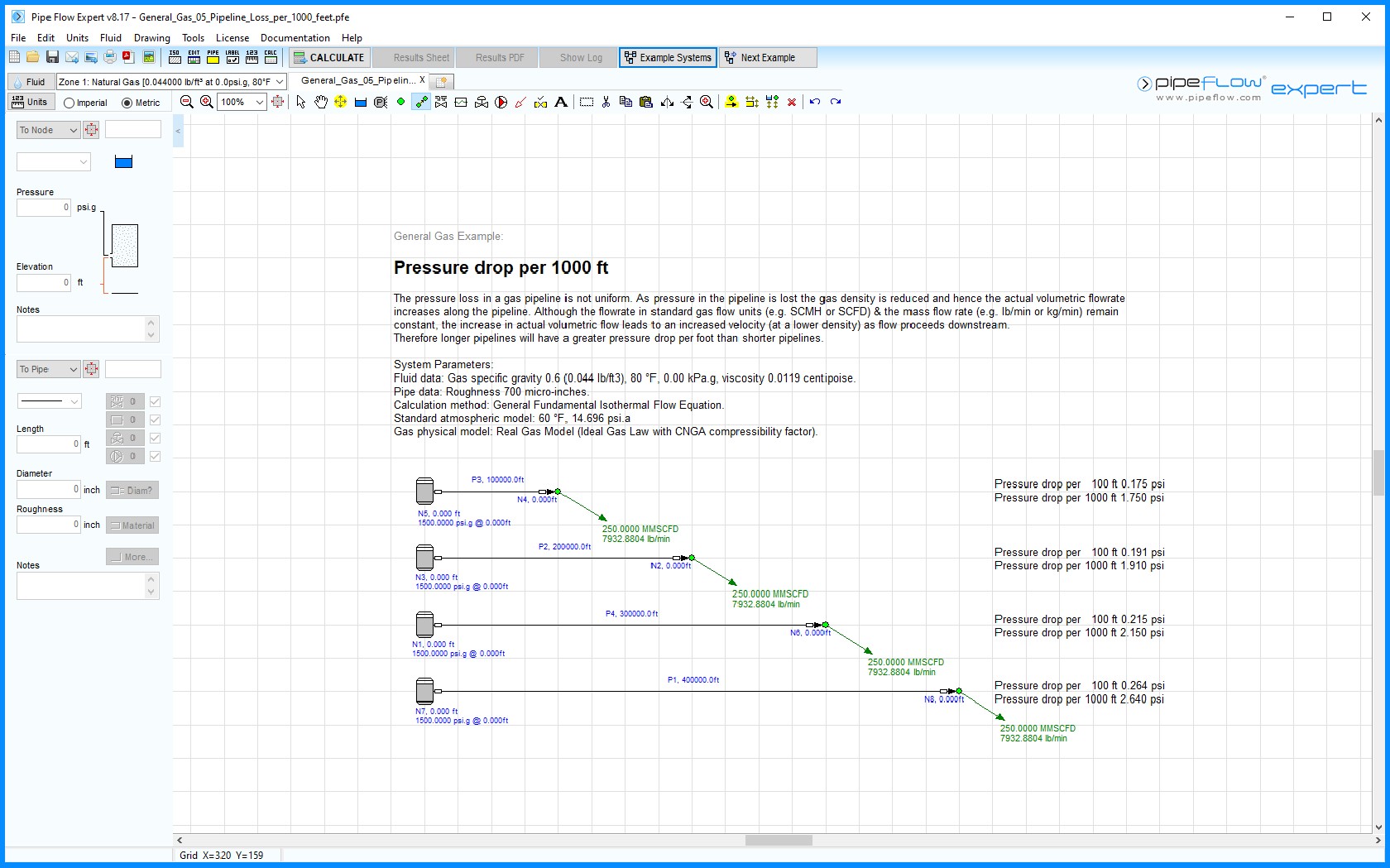General Gas 05 – Pipeline Loss per 1000 Feet

Figure 59 General Gas 05 – Pipeline loss per 1000 Feet
The pressure loss in a gas pipeline is not uniform. As pressure in the pipeline is lost, the gas density is reduced, and hence the actual volume of flow increases (at the lower density) as it moves along the pipeline (maintaining a constant mass flow).
Although the mass flow rate (lb/min or kg/min for example) and the gas flow in standard volume (SCMH or SCFM for example) remain constant, the increase in actual volumetric flow (at a lower density, as the pressure reduces) leads to an increased velocity as flow proceeds downstream. An increased velocity leads to a higher friction loss, therefore longer pipelines will have a greater pressure drop per foot than shorter pipelines.

